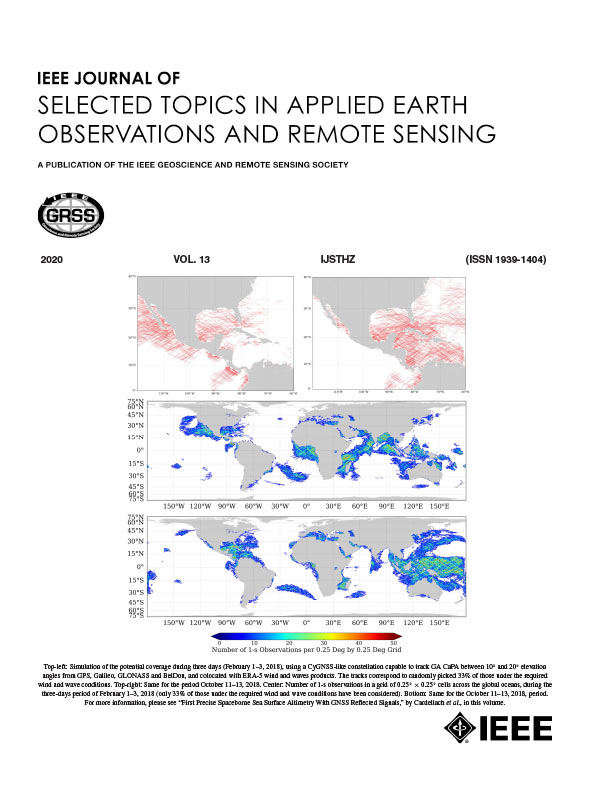少发合成孔径雷达目标识别综述
IF 5.3
2区 地球科学
Q1 ENGINEERING, ELECTRICAL & ELECTRONIC
IEEE Journal of Selected Topics in Applied Earth Observations and Remote Sensing
Pub Date : 2024-09-04
DOI:10.1109/JSTARS.2024.3454266
引用次数: 0
摘要
合成孔径雷达(SAR)具有全天候成像能力的优势,这使其在地球观测应用中尤为重要。近来,利用深度学习进行合成孔径雷达图像识别已成为雷达图像判读中的一门重要学科,因为深度学习网络可以生成高维特征,并在有大量训练样本的情况下使函数精确拟合。然而,对于合成孔径雷达图像来说,精确标注需要大量的精力和专家知识,而且容易因噪声影响而出错。SAR 标注数据的缺乏限制了深度神经网络的应用,因为深度神经网络通常需要大量的训练样本。因此,在只有少量训练样本的情况下识别合成孔径雷达目标的任务已成为一项重要的研究兴趣,并相应地引入了少量目标识别技术,该技术已显示出巨大的潜力。本文总结了最近在少拍合成孔径雷达图像目标识别方面取得的进展。首先,本文概述了少拍学习的概念,并讨论了合成孔径雷达识别领域的特定数据集。随后,文章深入探讨了几发合成孔径雷达目标识别方法的详细分类,其中包括基于迁移学习、数据增强、金属学习和基于模型策略的方法。最后,报告从定性和定量两个方面探讨了利用少镜头学习的合成孔径雷达目标自动识别技术,强调了需要高度重视的某些挑战和关键问题,并展望了未来的研究机会。本文章由计算机程序翻译,如有差异,请以英文原文为准。
A Review on the Few-Shot SAR Target Recognition
Synthetic aperture radar (SAR) has the advantage of providing imaging capabilities throughout the day and under all-weather conditions, which makes it particularly important for Earth observation applications. Recently, the utilization of deep learning for SAR image recognition has become a crucial discipline in radar image interpretation since the deepened networks can generate the high-dimensional features and make the function fit accurately when with a large amount of training samples. However, for SAR images, the accurate annotation demands significant effort, expert knowledge, and is prone to errors due to the effect of noise. The lack of SAR-labeled data limits the application of deep neural networks, which usually need a large number of training samples. Consequently, the task of recognizing SAR targets in the scenario with a few training samples has emerged as a significant research interest and, accordingly, the few-shot target recognition technique was introduced and has shown great potential. This article provides a summary of recent advancements in few-shot SAR image target recognition. First, this article outlines the concept of few-shot learning and discusses the dataset specific to the SAR recognition field. Subsequently, it delves into a detailed categorization of methods for recognizing few-shot SAR targets, which include approaches based on the transfer learning, data augmentation, metalearning, and model-based strategies. Finally, it examines both qualitative and quantitative aspects of SAR automatic target recognition technology utilizing few-shot learning, highlights certain challenges and crucial issues that require great attention, and offers a perspective on future research opportunities.
求助全文
通过发布文献求助,成功后即可免费获取论文全文。
去求助
来源期刊
CiteScore
9.30
自引率
10.90%
发文量
563
审稿时长
4.7 months
期刊介绍:
The IEEE Journal of Selected Topics in Applied Earth Observations and Remote Sensing addresses the growing field of applications in Earth observations and remote sensing, and also provides a venue for the rapidly expanding special issues that are being sponsored by the IEEE Geosciences and Remote Sensing Society. The journal draws upon the experience of the highly successful “IEEE Transactions on Geoscience and Remote Sensing” and provide a complementary medium for the wide range of topics in applied earth observations. The ‘Applications’ areas encompasses the societal benefit areas of the Global Earth Observations Systems of Systems (GEOSS) program. Through deliberations over two years, ministers from 50 countries agreed to identify nine areas where Earth observation could positively impact the quality of life and health of their respective countries. Some of these are areas not traditionally addressed in the IEEE context. These include biodiversity, health and climate. Yet it is the skill sets of IEEE members, in areas such as observations, communications, computers, signal processing, standards and ocean engineering, that form the technical underpinnings of GEOSS. Thus, the Journal attracts a broad range of interests that serves both present members in new ways and expands the IEEE visibility into new areas.

 求助内容:
求助内容: 应助结果提醒方式:
应助结果提醒方式:


